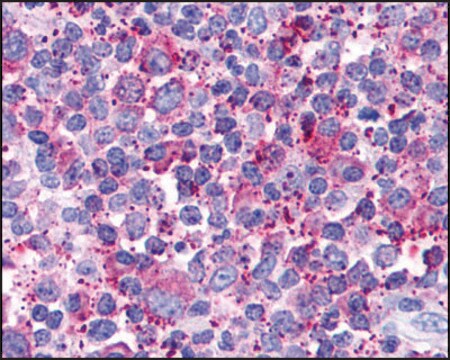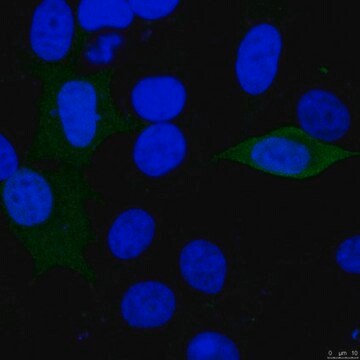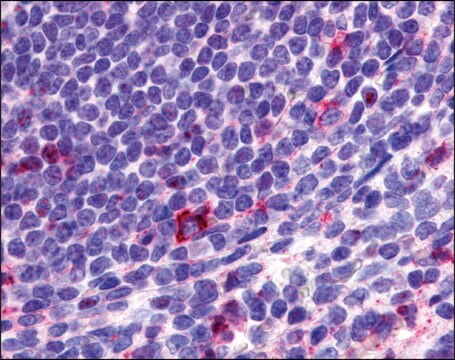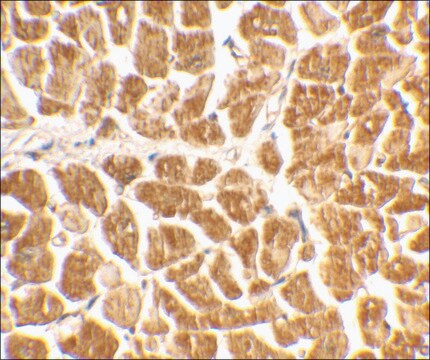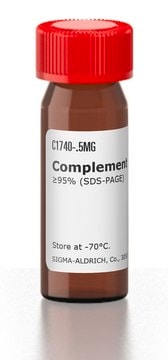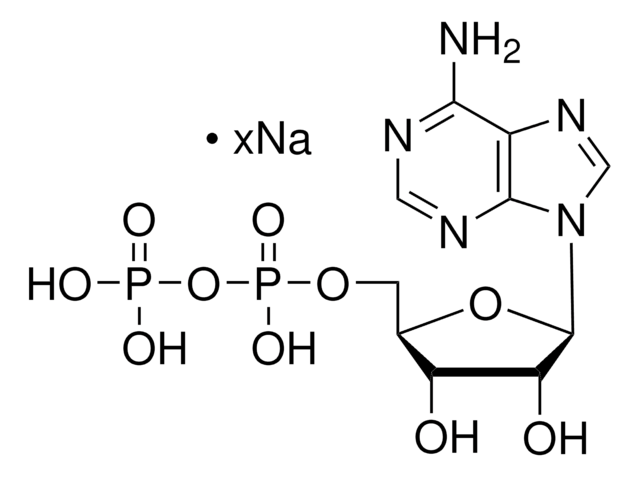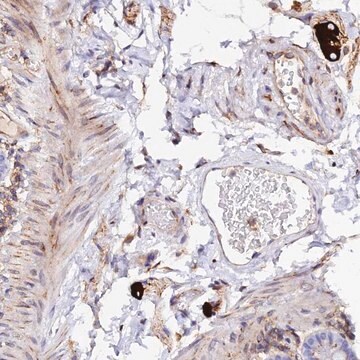ABN83
Anti-Vesicular Nucleotide Transporter (VNUT Antibody)
serum, from guinea pig
Sinonimo/i:
Solute carrier family 17 member 9
About This Item
Prodotti consigliati
Origine biologica
guinea pig
Livello qualitativo
Forma dell’anticorpo
serum
Tipo di anticorpo
primary antibodies
Clone
polyclonal
Reattività contro le specie
mouse, rat
tecniche
immunofluorescence: suitable
western blot: suitable
N° accesso NCBI
N° accesso UniProt
Condizioni di spedizione
dry ice
modifica post-traduzionali bersaglio
unmodified
Informazioni sul gene
mouse ... Slc17A9(228993)
rat ... Slc17A9(362287)
Descrizione generale
Specificità
Immunogeno
Applicazioni
Western Blotting Analysis: A 1:500 dilution from a representative lot detected purified full-length recombinant VNUT, as well as endogenous VNUT in mouse retina extract (Courtesy of Dr Erica Fletcher, The University of Melbourne, Australia).
Immunofluorescence Analysis: A 1:1000 dilution from a representative lot immunostained VNUT-positive neurons in the substantia nigra (SN) by fluorescent immunohistochemistry staining of 4% paraformaldehyde-fixed, free-floating mouse brain cryosections (Courtesy of Dr. Erica Fletcher, The University of Melbourne, Australia).
Immunofluorescence Analysis: A representative lot immunostained tyrosine hydroxylase-/TH-positive amacrine/interplexiform cell (IPC) type in the inner nuclear layer (INL) by fluorescent immunohistochemistry staining of 4% paraformaldehyde-fixed, OCT-embedded mouse and rat vertical retinal cryosections, as well as flatmounted mouse retina (Ho, T., et al. (2015). Front. Cell. Neurosci. In Press).
Immunofluorescence Analysis: A representative lot immunostained tyrosine hydroxylase-/TH-positive dopaminergic neurons in the substantia nigra (SN) and ventral tegmental area (VTA) by fluorescent immunohistochemistry staining of 4% paraformaldehyde-fixed, free-floating mouse brain cryosections (Ho, T., et al. (2015). Front. Cell. Neurosci. In Press).
Western Blotting Analysis: A representative lot detected the ~75 kDa and ~50 kDa X1/X2 VNUT isoforms in murine retinal and cortical homogenates, while no VUNT expression was detected in kidney homogenate. Immunogen peptide blocking abolished target bands detection (Ho, T., et al. (2015). Front. Cell. Neurosci. In Press).
Neuroscience
Developmental Neuroscience
Qualità
Western Blotting Analysis: A 1:500 dilution of this antibody detected Vesicular Nucleotide Transporter (VNUT) in 10 µg of mouse brain tissue lysate.
Descrizione del bersaglio
Stato fisico
Stoccaggio e stabilità
Handling Recommendations: Upon receipt and prior to removing the cap, centrifuge the vial and gently mix the solution. Aliquot into microcentrifuge tubes and store at -20°C. Avoid repeated freeze/thaw cycles, which may damage IgG and affect product performance.
Altre note
Esclusione di responsabilità
Non trovi il prodotto giusto?
Prova il nostro Motore di ricerca dei prodotti.
Codice della classe di stoccaggio
10 - Combustible liquids
Classe di pericolosità dell'acqua (WGK)
WGK 1
Certificati d'analisi (COA)
Cerca il Certificati d'analisi (COA) digitando il numero di lotto/batch corrispondente. I numeri di lotto o di batch sono stampati sull'etichetta dei prodotti dopo la parola ‘Lotto’ o ‘Batch’.
Possiedi già questo prodotto?
I documenti relativi ai prodotti acquistati recentemente sono disponibili nell’Archivio dei documenti.
Il team dei nostri ricercatori vanta grande esperienza in tutte le aree della ricerca quali Life Science, scienza dei materiali, sintesi chimica, cromatografia, discipline analitiche, ecc..
Contatta l'Assistenza Tecnica.